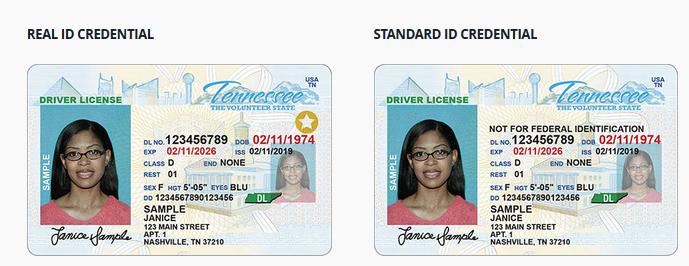How will it impact Tennesseans?
Just like you, our fellow Tennesseans, the Stillman and Friedland team are identifying as Titans fans. But did you know that you will also be required to identify in another, new way? This year in Tennessee and all over the U.S. some facilities will be required to identify you with a new ID. In this post, we will explain the ins and outs of this new law and how it will impact you.
The law is a federal initiative called REAL ID. In the wake of the 9/11 attacks in 2001 federal authorities determined that ID laws needed to be strengthened on a national standard. Four years later in 2005, the REAL ID Act set in motion the process of making better and more uniform standards in all states. As of October 1, 2020, individuals will be required to use the new I.D. in certain situations.
According to the Department of Homeland Security, you must have a REAL ID in order to:
• Access Federal facilities
• Board federally regulated commercial aircraft
• Enter nuclear power plants
The primary target for 2020 ID compliance is your state driver’s license or state ID. Passports are already compliant. Obviously, the main impact for most people is the air travel component. Unless you hold a US passport or TSA-approved Global Entry, NEXUS, SENTRI, or FAST, you will be required to show an upgraded REAL ID in order to fly on standard scheduled flights. The REAL ID, however, does not replace a passport for international air travel, sailing, or land border crossings.
Where can you get a REAL ID? These IDs are available through your local DMV. If you are getting a REAL ID because it is time to renew your license anyway, the cost is the same as a regular renewal. If, however, your license is not expiring, you will need to pay a duplicate fee, the same as if your license was damaged or lost. The current fee for a duplicate Tennessee license is $12.00. If you have previously replaced a license in this renewal period, the cost is $16.00.
How are REAL IDs different? REAL IDs feature a star in the upper right-hand corner, and regular IDs are marked NOT FOR FEDERAL IDENTIFICATION (see above image).
How is REAL ID different?
According to Wired Magazine:
The Real ID isn’t a new kind of card—apart from that star. What’s changing is how you get one. Where states have historically set their own rules for verifying the details on your ID, they now must all follow federal standards.
In other words, the difference is not a technology issue, but a procedural issue. Here are the key requirements for obtaining your REAL ID:
• You must apply in person. If you are renewing your license, you do not have the option of doing it online or by mail.
• You will need to provide documentation that contains your full legal name, date of birth, and social security number.
• You must provide two proofs of address
• You need to document your lawful status, meaning proof of citizenship or lawful residence.
As you can see, the key point in which the new standards differ is stricter documentation of legal residency, and the need to prove this even if you are merely renewing a previously granted license.
Those who follow tech developments can see that these REAL IDs are wholly unsophisticated in comparison to most credit cards we carry today. If you are worried about being tracked, REAL ID is infinitely less intrusive than any cellphone out there.
The main piece of advice we can offer is that if you travel by domestic air, and don’t have either a valid passport or TSA priority card
• Get your new ID well in advance of the October 1 deadline or be ready to wait in longer lines at the DMV.
As far as we can tell, those pre-October lines will be the major impact of the REAL ID program.
Because we care…







